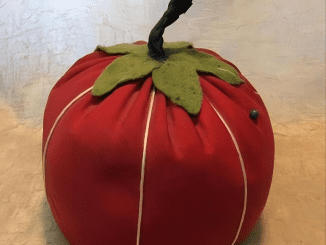Ah, ticks—the uninvited guests that no one ever wants to encounter. Last summer, I had the unfortunate experience of dealing with these blood-sucking pests up close and personal. My dog seemed to attract ticks like a magnet, turning our backyard into a battleground. With tweezers in hand, I found myself painstakingly removing these uninvited guests one by one. Thank goodness my friend was there for moral support, although her version of “help” involved watching from a very safe distance, thoroughly grossed out by the whole process.

Ticks are small, parasitic creatures that feed on the blood of animals and humans. They’re not just a nuisance; they’re potential carriers of diseases such as Lyme disease, Rocky Mountain spotted fever, and others that you definitely don’t want to deal with. These pests are more than just disgusting; they’re dangerous.
When you find a tick on your body or your pet, the first instinct is often panic. However, the key to safely removing a tick is to stay calm. Use fine-tipped tweezers to grasp the tick as close to the skin’s surface as possible, and pull upward with steady, even pressure. The goal is to remove the tick whole without leaving any parts embedded in the skin. After removal, clean the bite area and your hands with rubbing alcohol, iodine, or soap and water. It’s crucial not to crush the tick with your fingers. Dispose of it by placing it in alcohol, sealing it in a bag, wrapping it in tape, or flushing it down the toilet.
Tick Eggs: The Real Nightmare
As if dealing with adult ticks wasn’t bad enough, there’s something even more unsettling—tick eggs. For those fortunate enough to have never encountered them, tick eggs are tiny but not invisible. They are usually reddish-brown and are laid in clusters that resemble a small, slightly grotesque pearl necklace. Discovering these clusters in your garden is a horror story in itself, as each of those tiny eggs has the potential to become a tick that could find its way onto you or your pets.
The danger of tick eggs lies in their sheer numbers. A single female tick can lay thousands of eggs at a time, making it crucial to take immediate action to prevent a potential infestation. An unchecked tick population can lead to an increased risk of disease transmission and the discomfort of knowing these pests are multiplying in your backyard.
How to Remove and Dispose of Tick Eggs Safely

When I stumbled upon a cluster of tick eggs in my garden, I prepared for battle. Equipped with gloves, I carefully scooped the eggs into a jar filled with rubbing alcohol. This method ensures that the eggs are killed instantly. It’s important to inspect the surrounding area for any additional clusters or ticks. After dealing with the eggs, I thoroughly cleaned the area, spraying it with a mixture of water and permethrin—a pesticide effective against ticks. However, permethrin should be used cautiously and in accordance with the product’s instructions.
Preventing Ticks: Your Best Defense
While removing ticks and their eggs is essential, preventing them from becoming a problem in the first place is even better. Here are some preventive measures you can take:

The Importance of Vigilance
Discovering tick eggs or encountering ticks can be unsettling, but it doesn’t have to ruin your outdoor fun. By staying vigilant and taking prompt action, you can protect your home and family from these pests. While ticks and their eggs may be an inevitable part of enjoying the outdoors, they don’t have to be a source of constant worry. With the right precautions, you can enjoy a tick-free environment.
Conclusion: Staying Vigilant in the Battle Against Ticks
While my summer encounter with ticks was anything but pleasant, it taught me the importance of being prepared. Whether you’re dealing with adult ticks or their eggs, knowing how to remove them safely and prevent future infestations is key to protecting yourself and your loved ones. So here’s to staying vigilant and making sure these unwanted guests don’t ruin our outdoor adventures. With a little knowledge and preparation, we can keep our spaces tick-free—or at least be really good at dealing with them when they show up!


